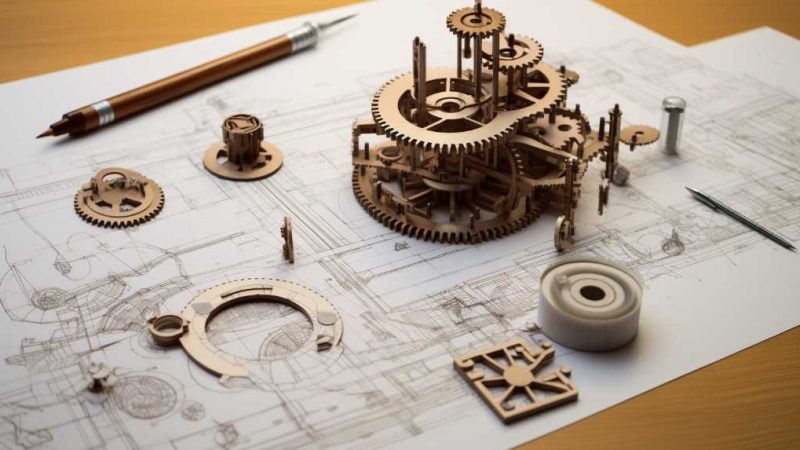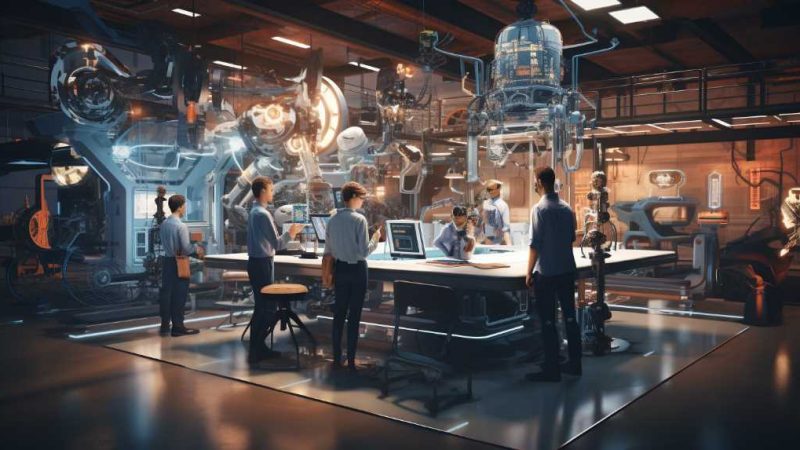Final Year Project Ideas for Mechanical Engineering Students

For mechanical engineering students in their final year, choosing a project is a big deal. It’s a chance to show off what they’ve learned and to try out new technologies. They can pick from a bunch of cool areas like green energy, making robots, designing cars, studying materials, or exploring how fluids and heat work.
By working on these projects, students get to prove they’re good at designing, figuring things out, and solving problems. This hands-on experience is super valuable because it prepares them for their future engineering careers.
For example, a student might design a new wind turbine blade that generates more power. This project would show their understanding of aerodynamics and material strength. Or, they might create a robot that can help with tasks in a factory, which would demonstrate their skills in automation and electronics.
These projects aren’t just homework; they’re stepping stones to becoming professional engineers.
Renewable Energy Innovations
Mechanical engineering students looking for meaningful final year projects should consider the field of renewable energy. This area is crucial because it tackles important environmental issues. By focusing on renewable energy, students can use their skills to create and improve systems that use clean energy sources.
For example, they might work on making solar panels that capture more heat, wind turbines that generate more power, or methods to turn organic waste into energy. These engineers play a key role in making sure that the equipment to collect, change, and store energy works well and is cost-effective. They use their knowledge of materials, heat, and fluid movement to come up with new solutions that make sense technically and financially.
A successful project here can really help grow the economy that’s based on clean energy.
Robotics and Automation Systems
In the field of Robotics and Automation Systems, final year mechanical engineering students have a great chance to put what they’ve learned into practice. They can make new tools that make manufacturing smoother and more effective. These systems are crucial to today’s industry because they bring together mechanical design, electronic control, and software engineering to create complex machines.
For example, students could work on building robotic arms that put things together with high accuracy. They could also create self-driving robots that move materials around, making the storage and delivery of goods more efficient.
By using sensors, motors, and smart control software, these projects aim to make robots that can adapt and think more like humans. Another goal is to design automation processes that work really well, which can help reduce mistakes made by people and cut down on how much it costs to run things.
This is why it’s so important for mechanical engineers to be involved in making new technology in this area. They can make a big difference in how industries operate by working on these kinds of projects.
Automotive Design and Efficiency
Mechanical engineering students who work on car design and efficiency projects get to make cars that use less fuel, pollute less, and have the latest technology. By doing these projects, they learn how to use what they know about heat and energy to make engines work better and emit less harmful gases.
For example, when cars are made with lighter materials, they don’t weigh as much, which means they can go farther on the same amount of fuel. Plus, making the shape of the car more streamlined reduces wind resistance, which makes the car more efficient. Students might also look into new types of engines, like those in hybrid and electric cars, which are at the forefront of making cars more efficient.
Working on these projects is more than just a learning experience; it’s training the engineers who will help make our ways of getting around more sustainable in the future.
And as they dive into this work, they could, for instance, use a specific type of lightweight composite, like carbon fiber, to make a car’s body. This not only cuts down on weight but also doesn’t rust like traditional steel. Or they could design a new car part that works better than old ones and recommend it to companies for real-world use. In conversations about their work, they’d be able to explain why each choice matters for the environment and our future.
All in all, they’re not just studying; they’re helping to shape how we’ll drive tomorrow.
Advanced Material Development
Mechanical engineering students are pushing the boundaries by working on new and improved materials. They’re making composites and alloys that are crucial for high-tech machines and tools we’ll need in the future. This work is really important because it helps make materials stronger, lighter, and more resistant to heat and wear, which is great for things like planes, cars, and medical devices.
For example, students might work on creating materials that don’t rust easily or that conduct electricity really well. When they look closely at how these new materials are structured on a tiny level, they learn more about how they might be used and what their limits are.
One cool way they’re doing this is by using advanced techniques to build materials. Think of 3D printing or using tiny particles to make something – that’s the kind of cutting-edge stuff they’re doing. This isn’t just a school project; it has the potential to change industries across the board.
Thermal and Fluid System Analysis
Mechanical engineering students looking into thermal and fluid systems can work on practical projects that help them understand how heat moves and how fluids flow. They can learn a lot by figuring out how to make heat exchangers more efficient or by designing cooling systems for electronics that get very hot. For example, they might use computer programs that simulate the flow of fluids and heat to see how well their designs work. It is also important for them to work on projects that save energy, like improving heating, ventilation, and air conditioning (HVAC) systems or making solar panels that use heat from the sun.
These projects are more than just class assignments; they help students learn important concepts in thermodynamics and fluid mechanics. By using math and simulations, they don’t just memorize theories—they get to apply them in real-world situations. This experience is crucial because it prepares them for the challenges they’ll face as engineers working to make technology better and more efficient. Plus, when they focus on sustainability, they’re contributing to a future where we use energy wisely and responsibly.
Conclusion
As mechanical engineering students enter their final year, they face an exciting chance to make a real difference by working on projects that matter. They can dive into areas like renewable energy, creating new ways to harness the sun or wind power.
They might explore robotics, finding ways to improve how machines work for us, or focus on designing cars that are safer and more fuel-efficient. There’s also the chance to develop new materials that could change how we build everything or work on thermal-fluid systems to make industries run better.
These projects are more than just schoolwork; they’re a step toward smarter technology and greener solutions for everyone’s future. By tackling these projects, students don’t just test their knowledge; they can push the whole field of engineering forward.






